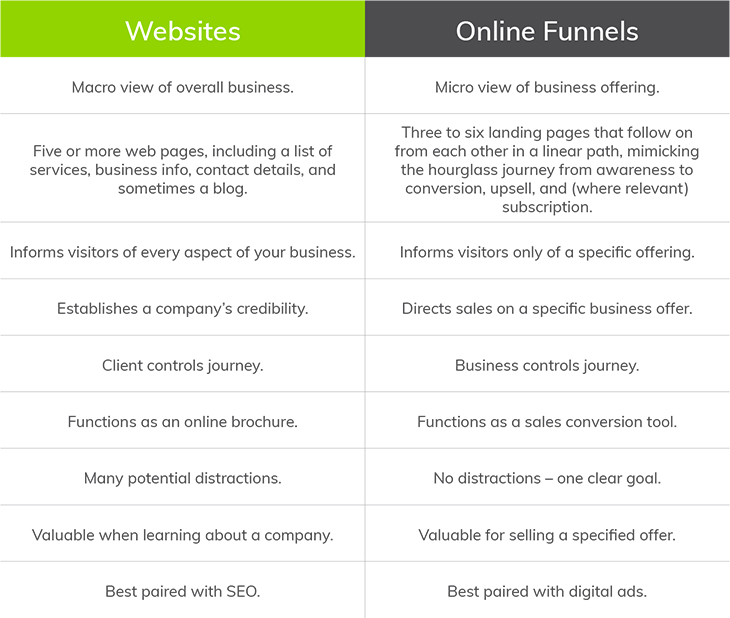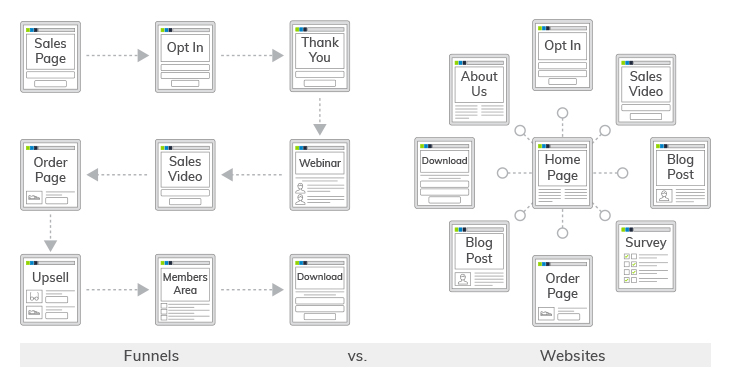Online marketing funnels (like the ones we teach you about in our guide, How to Drive Conversions Using Automated Marketing Funnels) are made up, in part, of a series of webpages. Because of this, some people wonder what the difference is between funnels and websites. Here’s our take:

Websites and funnels work hand in hand, establishing your digital presence from different angles and maximising your business’s potential sales. If you’re focusing only on one of these two, you could be missing out on a valuable digital marketing tactic.
For instance, websites without funnels may not be as good at converting, while funnels without websites can lack longevity, credibility, and scale.

Online funnels function beautifully for isolated deals and offers but can’t replace your CRM and broader marketing / sales efforts. As mentioned above, there is an important place for both approaches.
Want to learn how you can use landing pages and email automation to create sales funnels for your business? Check out our guide, How to Drive Conversions Using Automated Marketing Funnels. In it, we explore how you can use funnels to:
- Establish a robust online presence that’s dynamic and flexible.
- Generate more leads automatically.
- Nurture leads using psychological principles.
- Make more sales.
- Automate some sales processes.
- Build a sustainable business marketing strategy.












